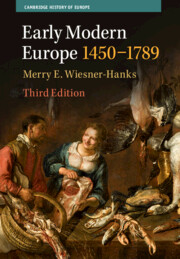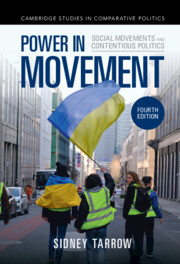Refine search
Actions for selected content:
36901 results in Cambridge Textbooks
Contents
-
- Book:
- Principles of Enterprise Law
- Published online:
- 12 November 2022
- Print publication:
- 01 September 2022, pp xiii-xxiv
-
- Chapter
- Export citation
Appendix
-
- Book:
- Principles of Enterprise Law
- Published online:
- 12 November 2022
- Print publication:
- 01 September 2022, pp 699-699
-
- Chapter
- Export citation
Part I - History and Theory
-
- Book:
- Principles of Enterprise Law
- Published online:
- 12 November 2022
- Print publication:
- 01 September 2022, pp 9-92
-
- Chapter
- Export citation
Dedication
-
- Book:
- Principles of Enterprise Law
- Published online:
- 12 November 2022
- Print publication:
- 01 September 2022, pp ix-x
-
- Chapter
- Export citation

Early Modern Europe, 1450–1789
-
- Published online:
- 30 August 2022
- Print publication:
- 25 August 2022
-
- Textbook
- Export citation

Power in Movement
- Social Movements and Contentious Politics
-
- Published online:
- 25 August 2022
- Print publication:
- 11 August 2022
-
- Textbook
- Export citation
6 - Economics and the environment, 1450–1600
- from Part I
-
- Book:
- Early Modern Europe, 1450–1789
- Published online:
- 30 August 2022
- Print publication:
- 25 August 2022, pp 211-249
-
- Chapter
- Export citation
13 - Europe in the world, 1600–1789
- from Part II
-
- Book:
- Early Modern Europe, 1450–1789
- Published online:
- 30 August 2022
- Print publication:
- 25 August 2022, pp 515-566
-
- Chapter
- Export citation
4 - Cultural and intellectual life, 1450–1600
- from Part I
-
- Book:
- Early Modern Europe, 1450–1789
- Published online:
- 30 August 2022
- Print publication:
- 25 August 2022, pp 133-170
-
- Chapter
- Export citation
11 - Religious consolidation and renewal, 1600–1789
- from Part II
-
- Book:
- Early Modern Europe, 1450–1789
- Published online:
- 30 August 2022
- Print publication:
- 25 August 2022, pp 429-473
-
- Chapter
- Export citation
3 - Politics and power, 1450–1600
- from Part I
-
- Book:
- Early Modern Europe, 1450–1789
- Published online:
- 30 August 2022
- Print publication:
- 25 August 2022, pp 93-132
-
- Chapter
- Export citation
Copyright page
-
- Book:
- Early Modern Europe, 1450–1789
- Published online:
- 30 August 2022
- Print publication:
- 25 August 2022, pp iv-iv
-
- Chapter
- Export citation
8 - Individuals in society, 1600–1789
- from Part II
-
- Book:
- Early Modern Europe, 1450–1789
- Published online:
- 30 August 2022
- Print publication:
- 25 August 2022, pp 299-334
-
- Chapter
- Export citation
12 - Economics and the environment, 1600–1789
- from Part II
-
- Book:
- Early Modern Europe, 1450–1789
- Published online:
- 30 August 2022
- Print publication:
- 25 August 2022, pp 474-514
-
- Chapter
- Export citation
Methods and debates boxes
-
- Book:
- Early Modern Europe, 1450–1789
- Published online:
- 30 August 2022
- Print publication:
- 25 August 2022, pp xvii-xvii
-
- Chapter
- Export citation
Part II
-
- Book:
- Early Modern Europe, 1450–1789
- Published online:
- 30 August 2022
- Print publication:
- 25 August 2022, pp 297-566
-
- Chapter
- Export citation
Tables
-
- Book:
- Early Modern Europe, 1450–1789
- Published online:
- 30 August 2022
- Print publication:
- 25 August 2022, pp xiv-xiv
-
- Chapter
- Export citation
10 - Cultural and intellectual life, 1600–1789
- from Part II
-
- Book:
- Early Modern Europe, 1450–1789
- Published online:
- 30 August 2022
- Print publication:
- 25 August 2022, pp 383-428
-
- Chapter
- Export citation
9 - Politics and power, 1600–1789
- from Part II
-
- Book:
- Early Modern Europe, 1450–1789
- Published online:
- 30 August 2022
- Print publication:
- 25 August 2022, pp 335-382
-
- Chapter
- Export citation
Source boxes
-
- Book:
- Early Modern Europe, 1450–1789
- Published online:
- 30 August 2022
- Print publication:
- 25 August 2022, pp xvi-xvi
-
- Chapter
- Export citation
